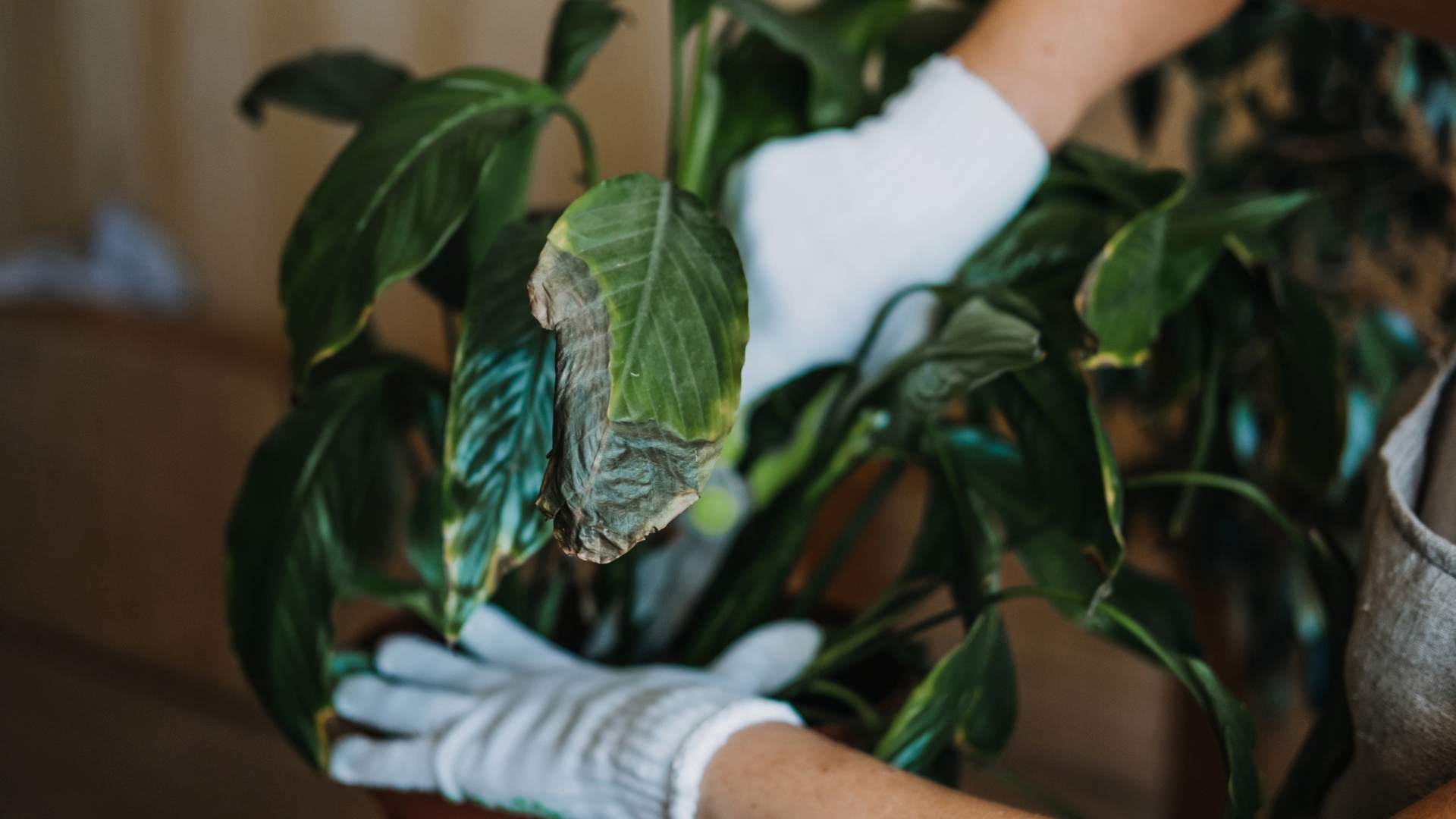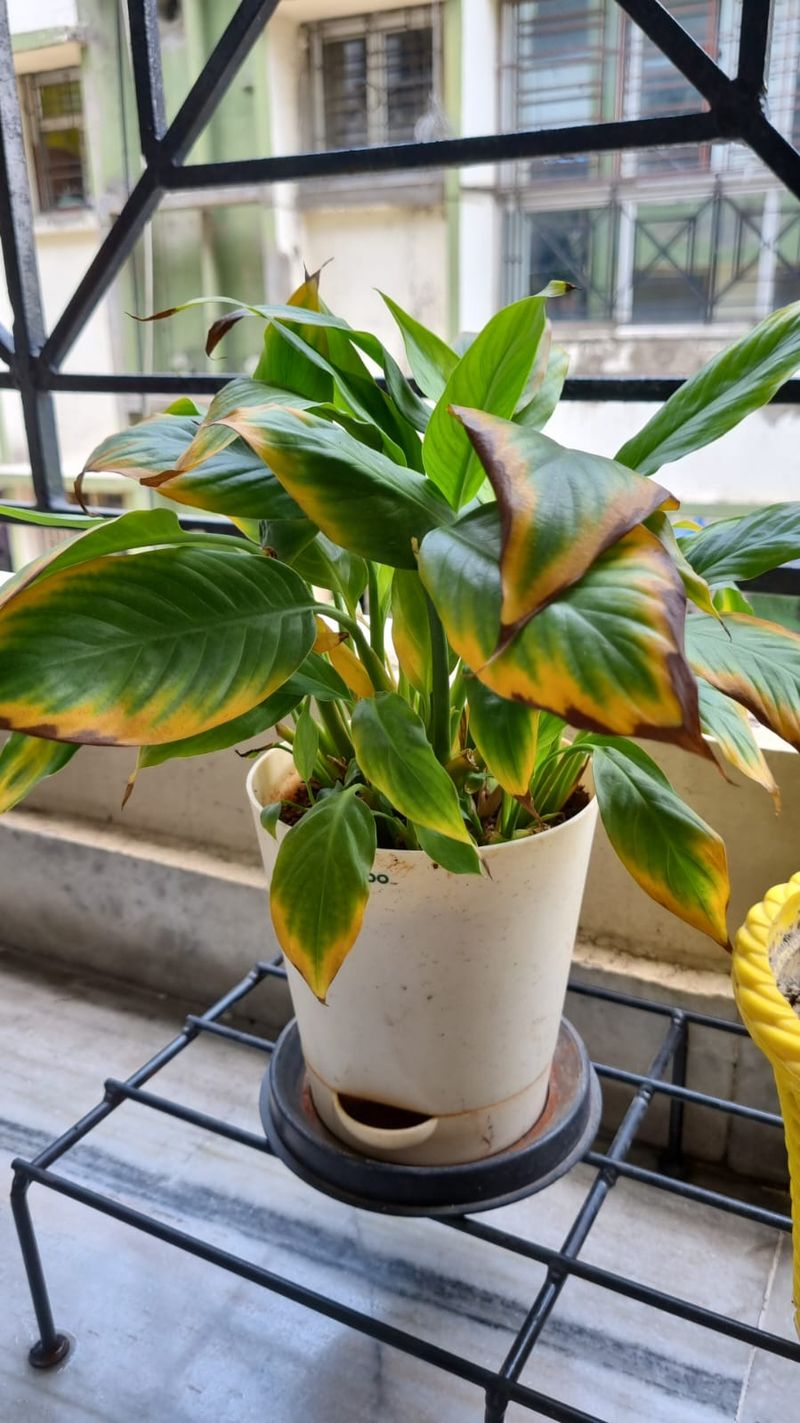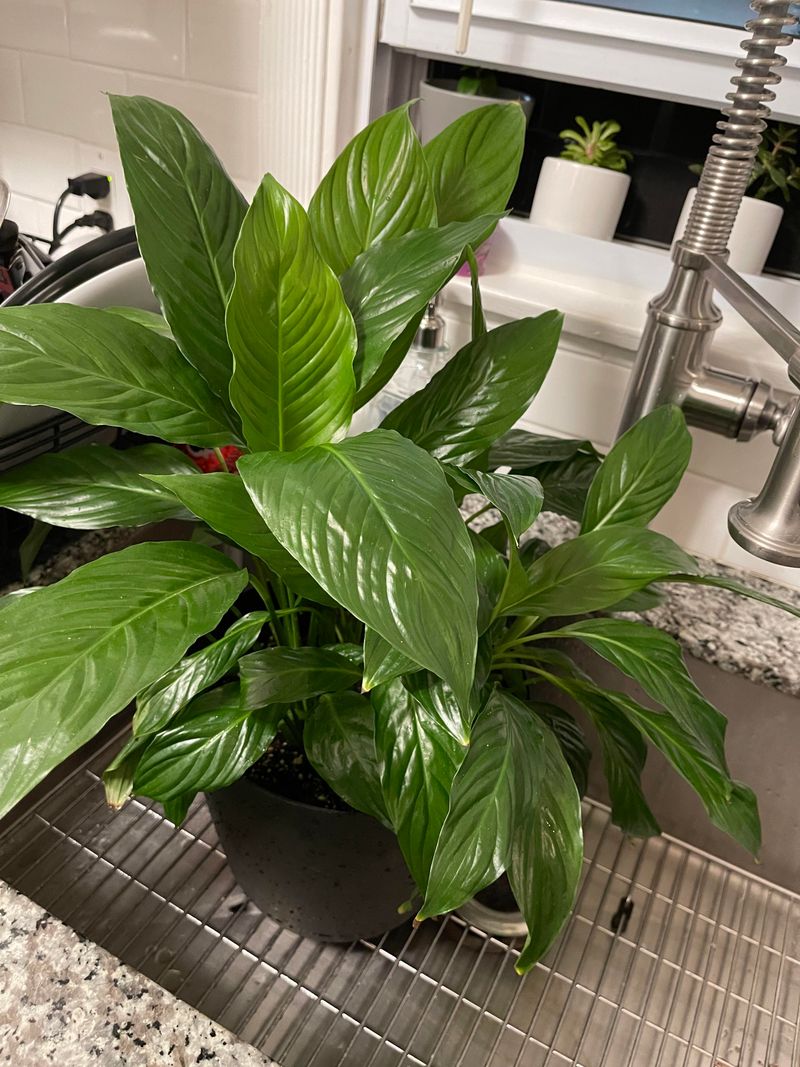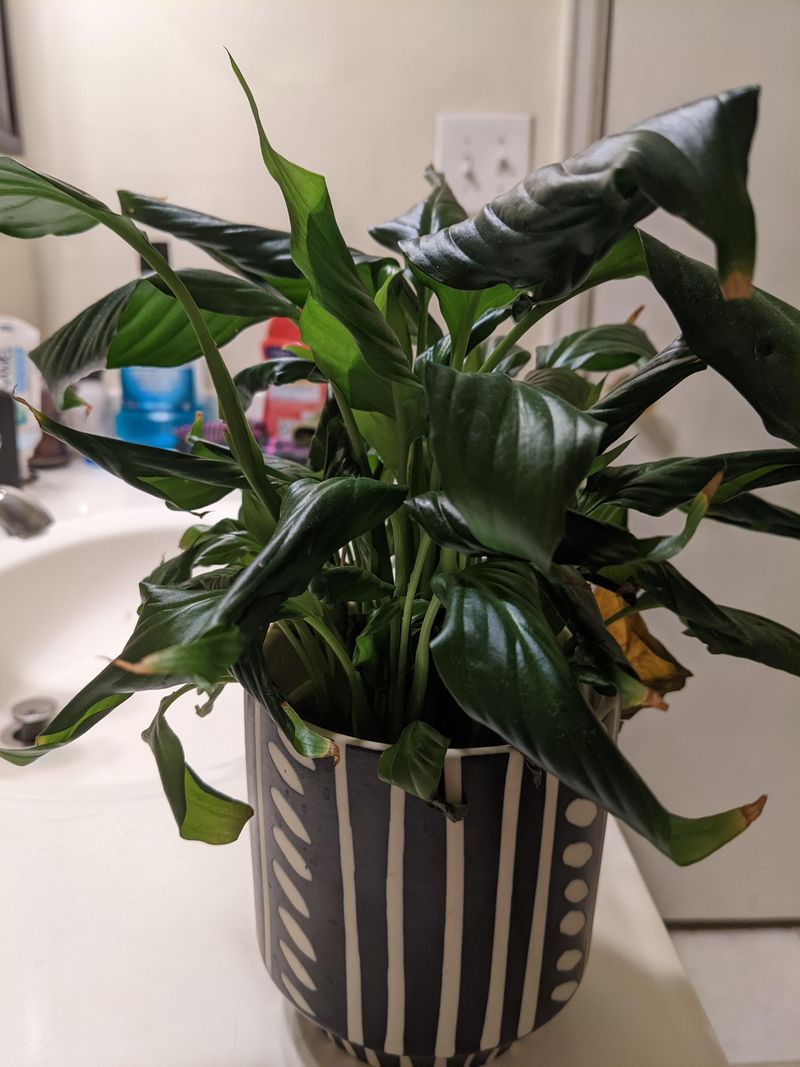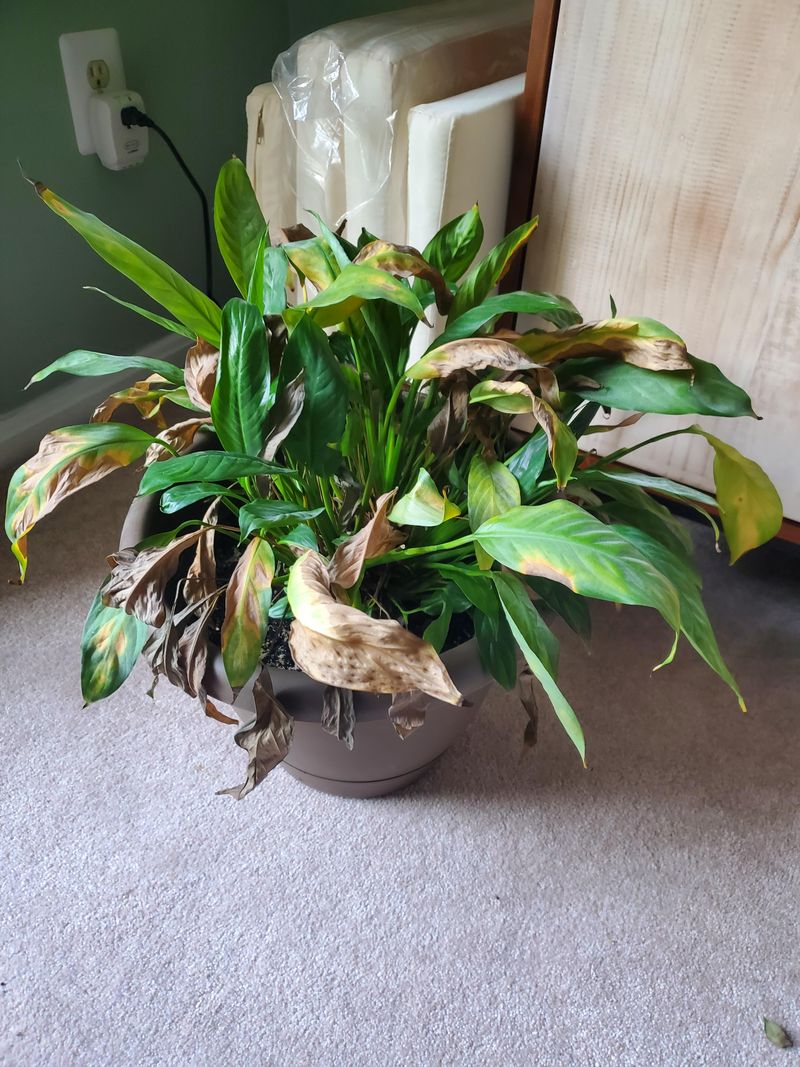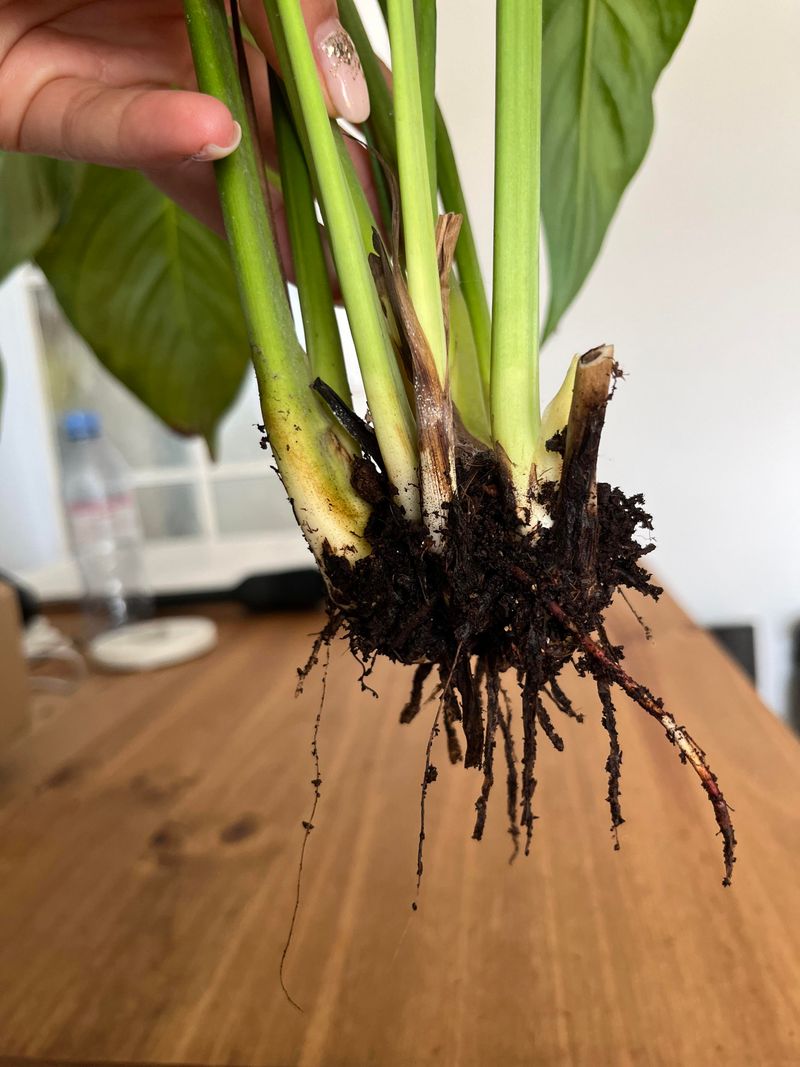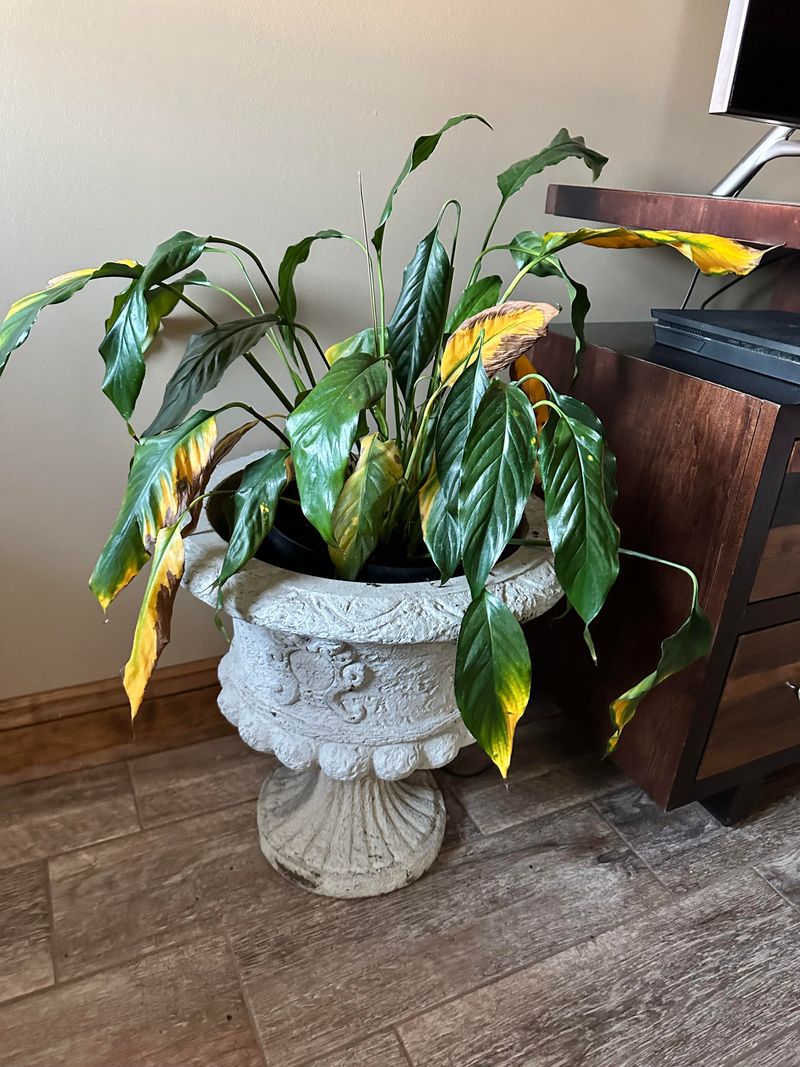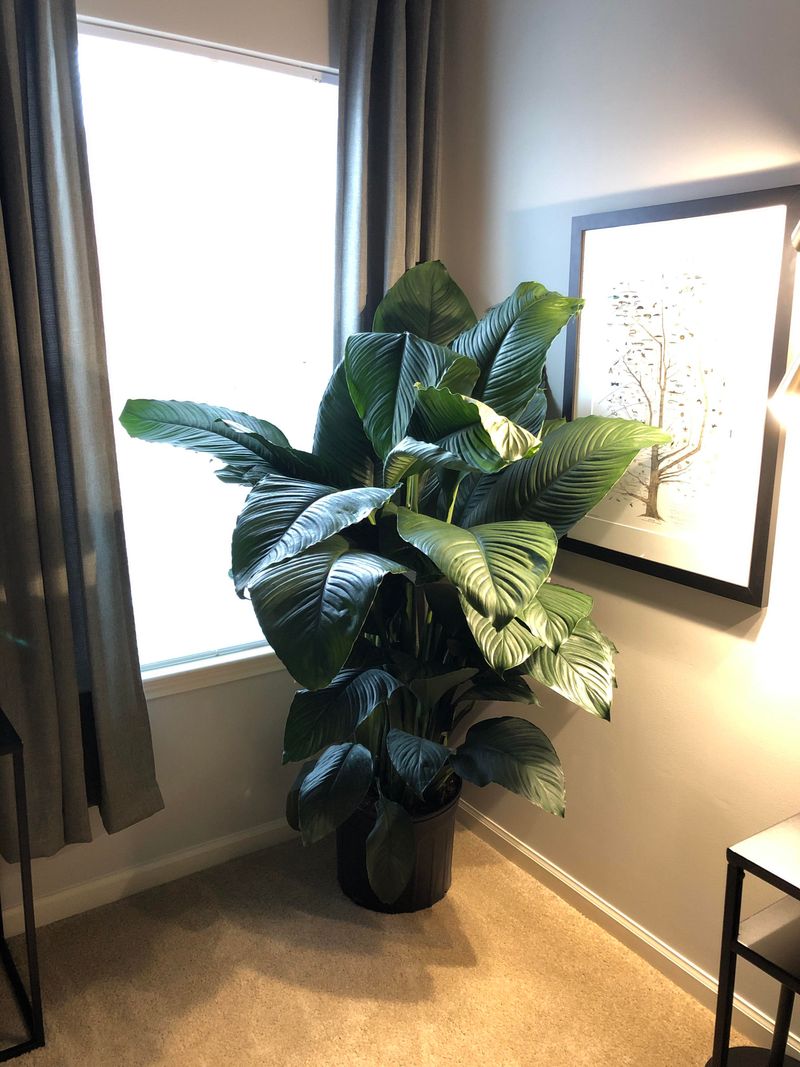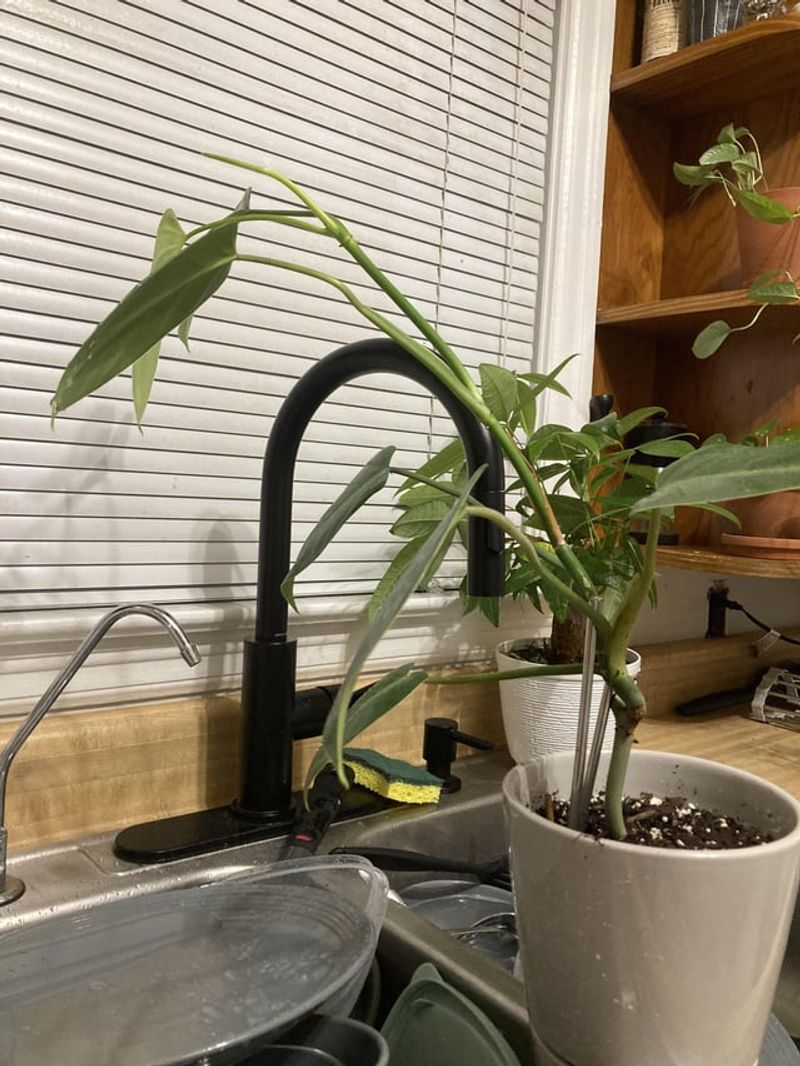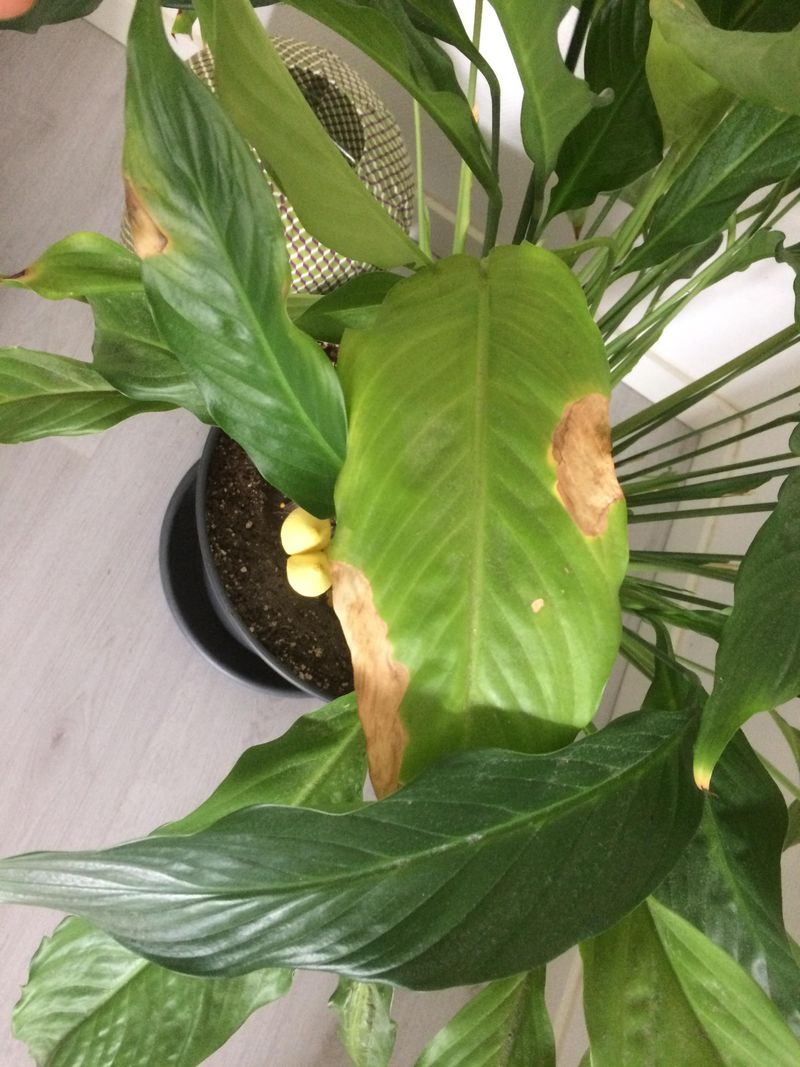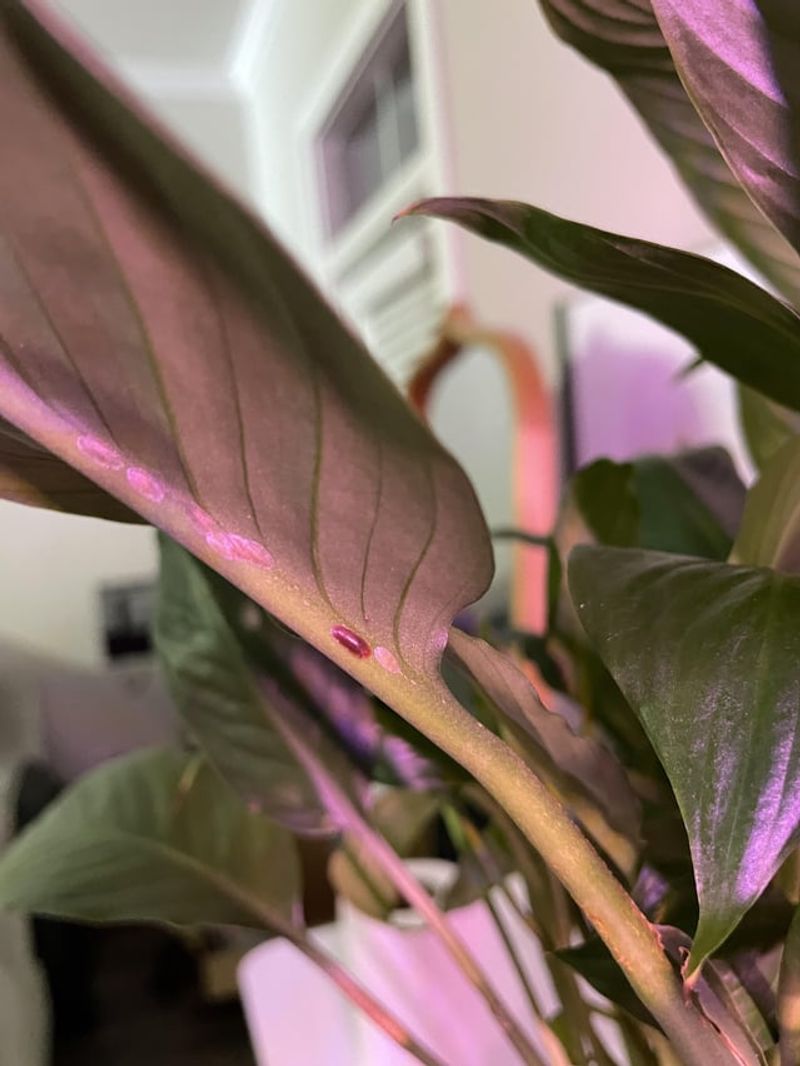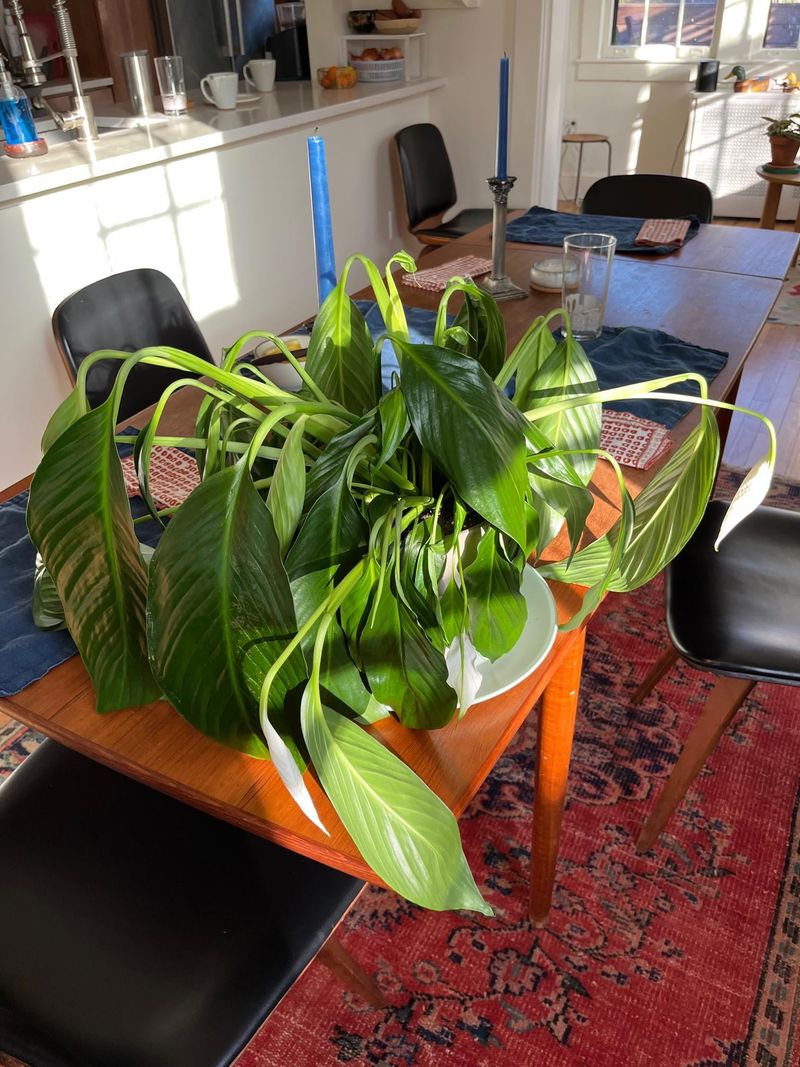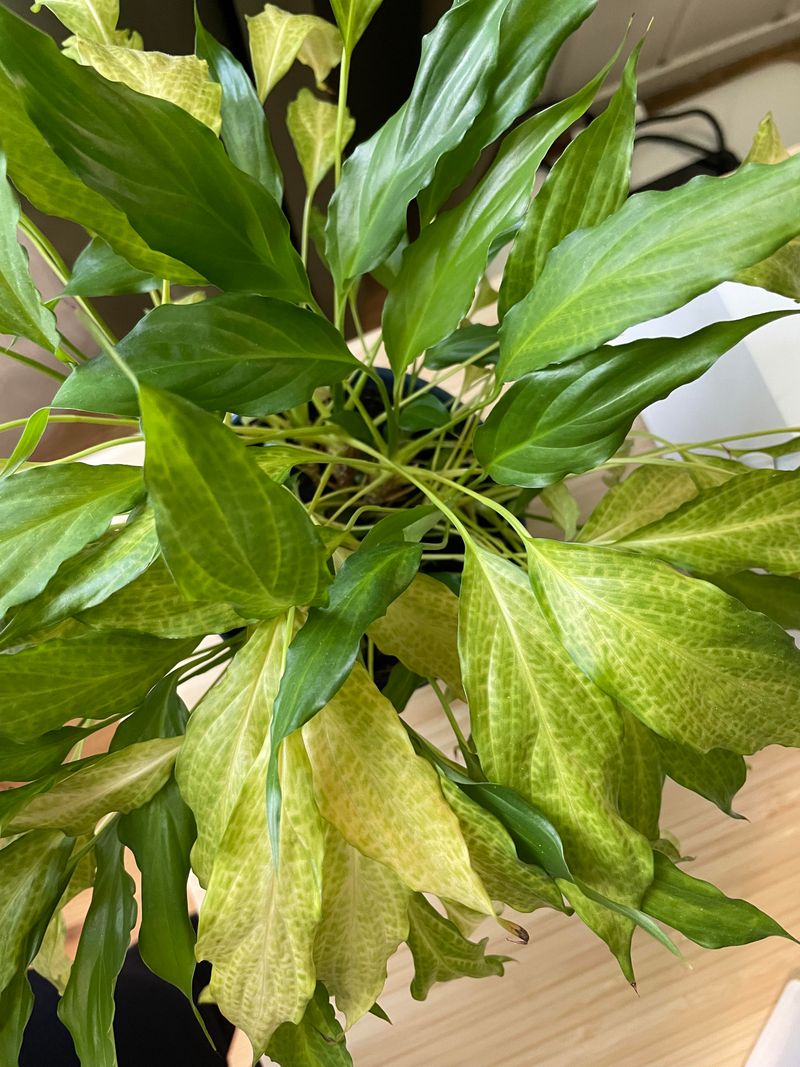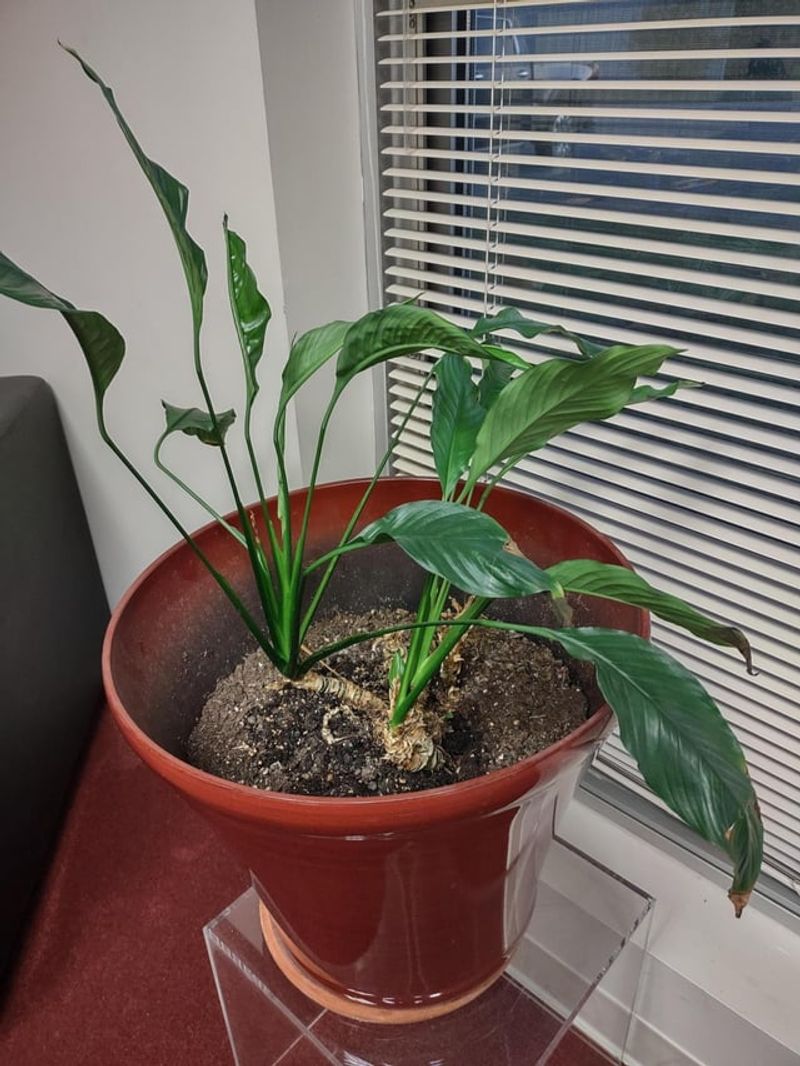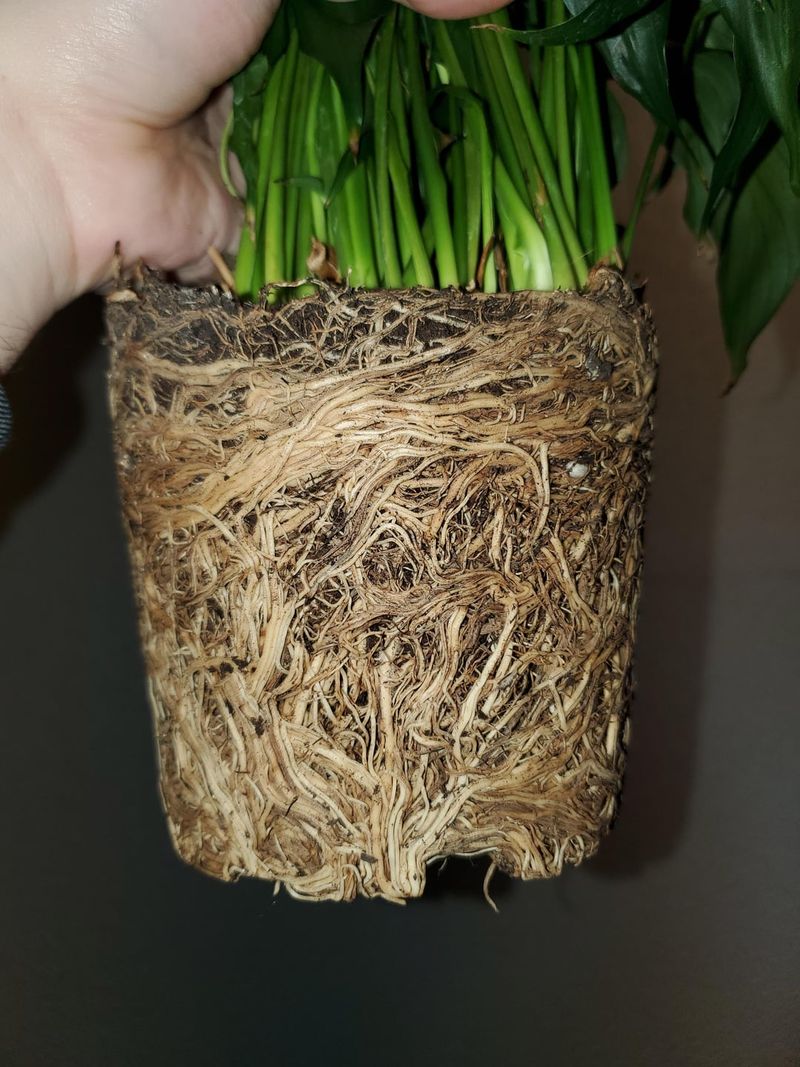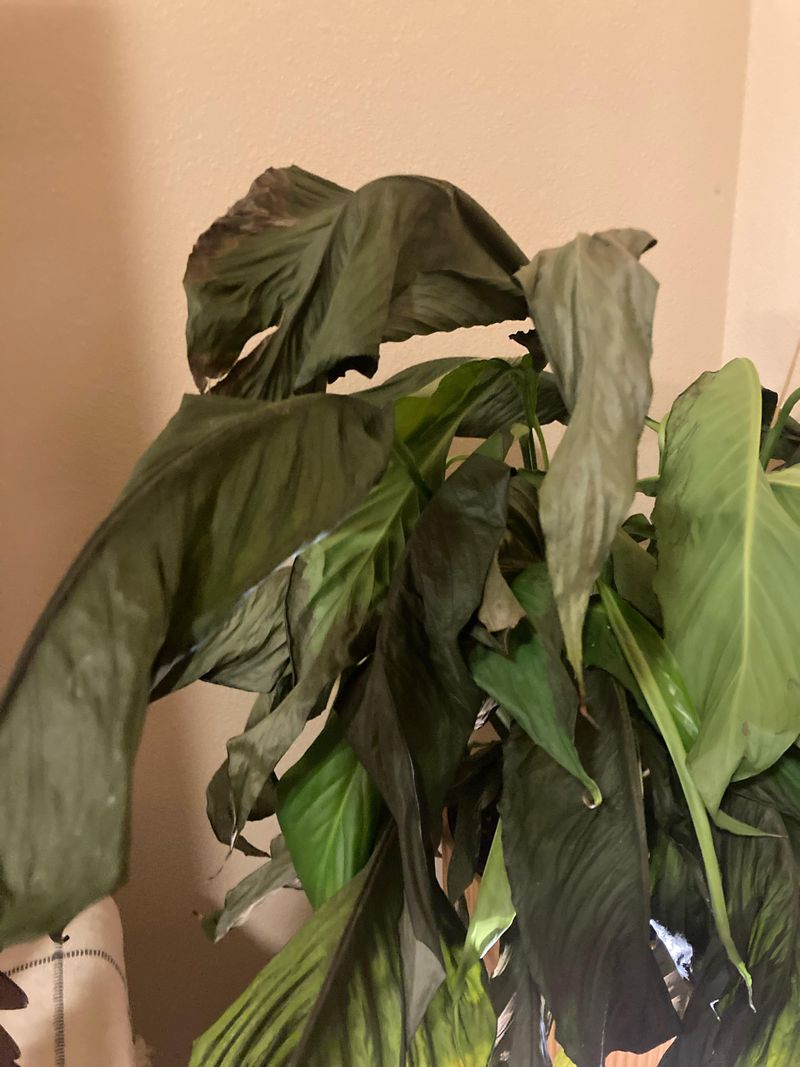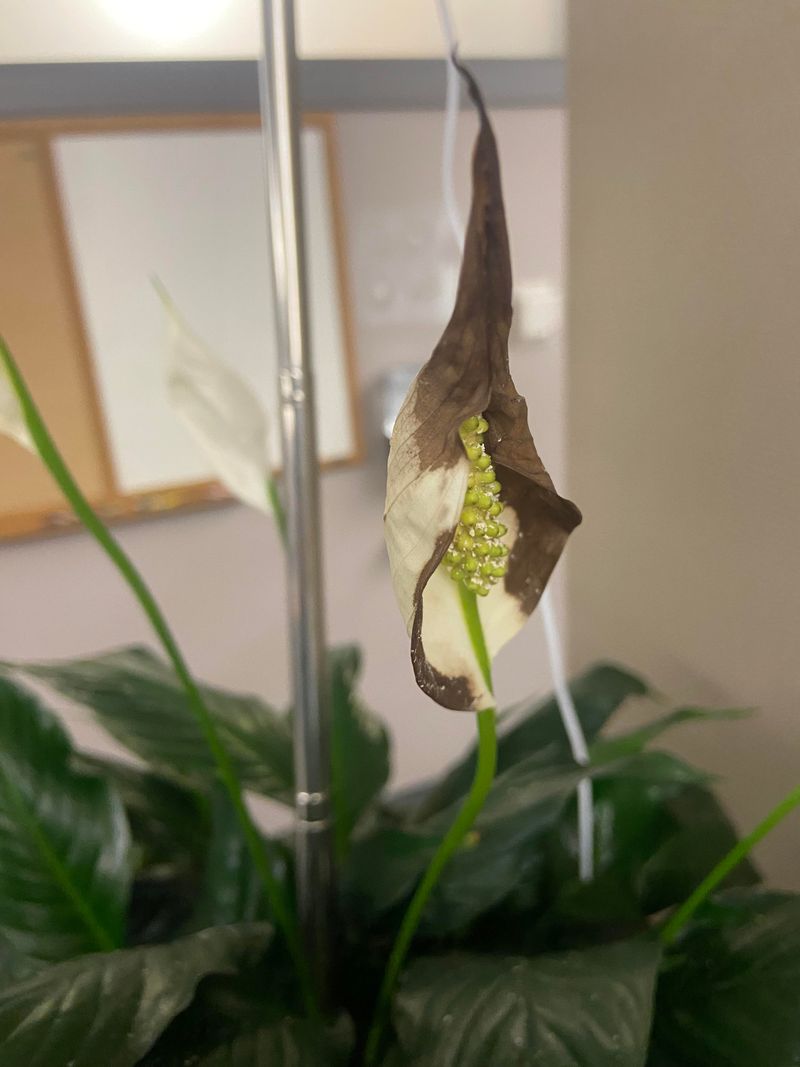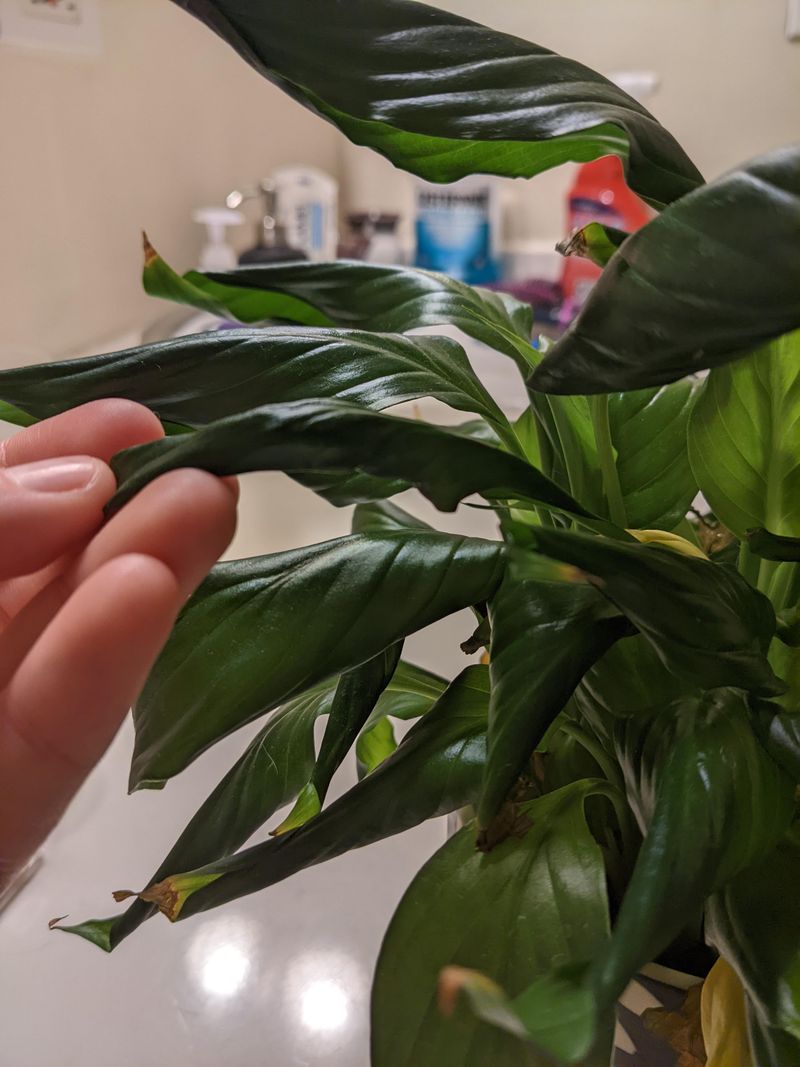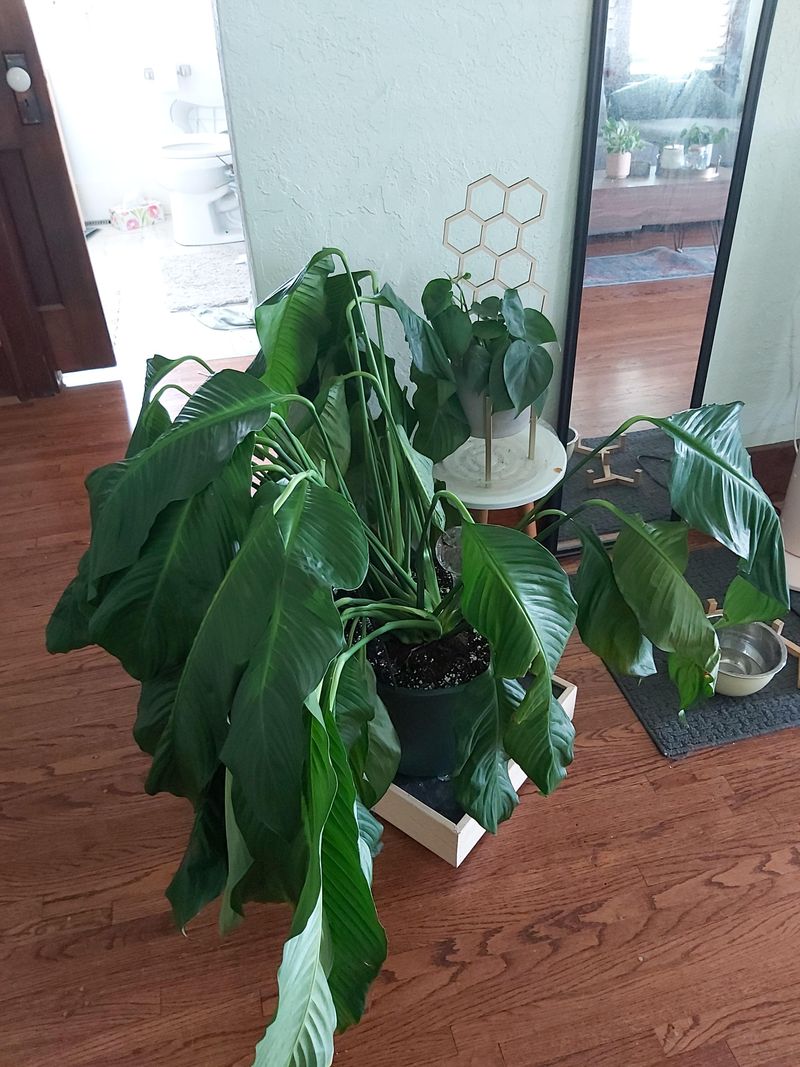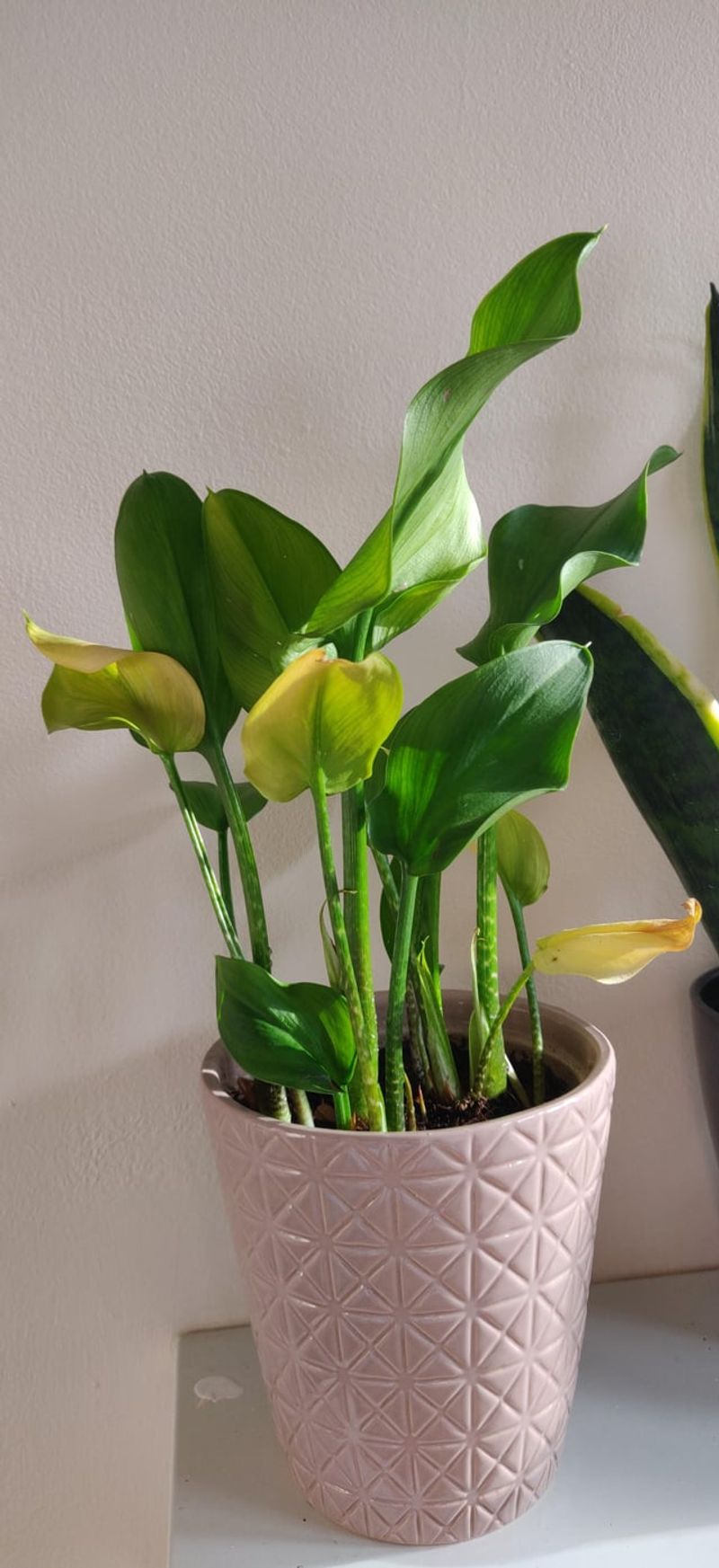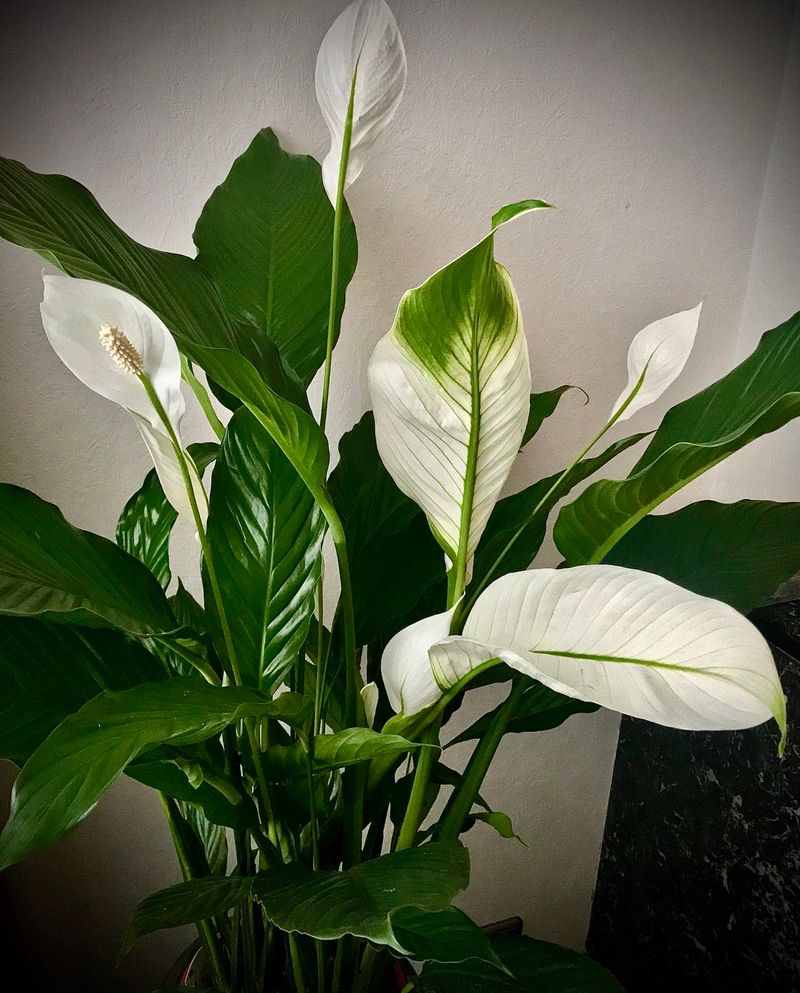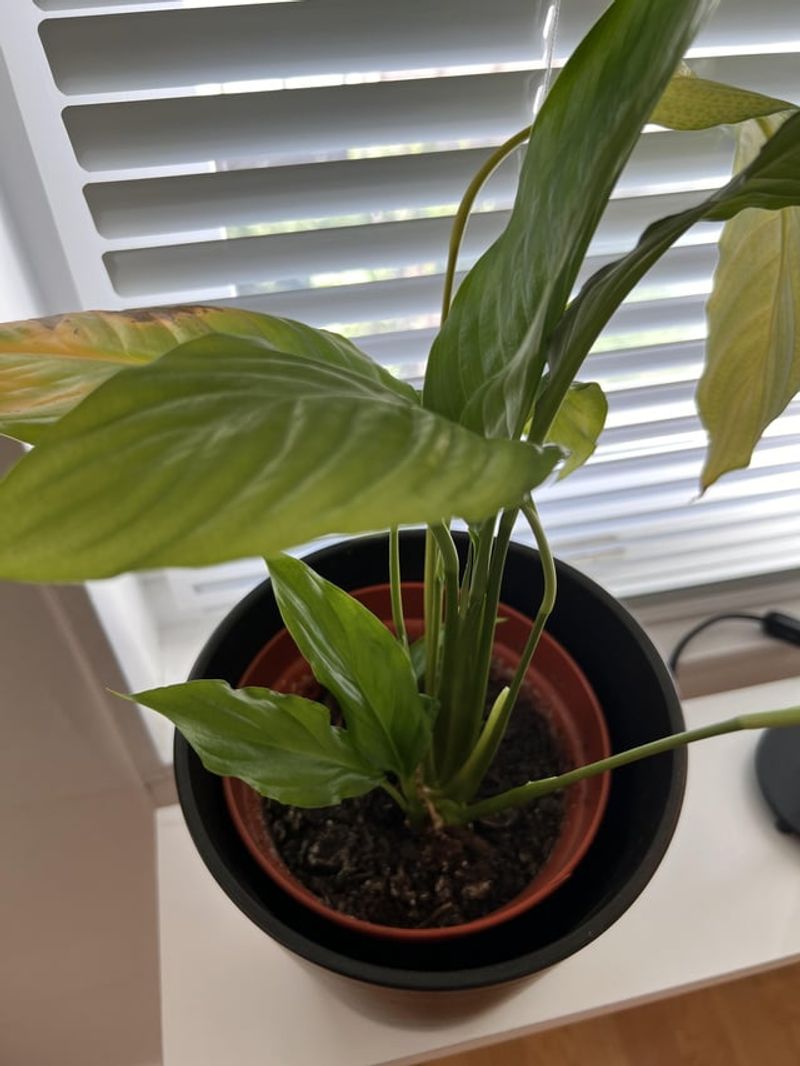Peace lilies are tough, but they’re not invincible—sometimes, they’ll let you know when something’s wrong. Drooping leaves, brown tips, or stubbornly refusing to bloom?
Don’t worry, I’ve got you covered! I’ve rounded up the 10 most common peace lily problems, along with quick fixes to get your plant back on track.
With a little care and the right approach, your peace lily will be looking its best in no time!
1. Yellow Leaves on Peace Lily
Yellow leaves on a peace lily are usually caused by overwatering or underwatering. If the soil stays too wet, roots can rot, and if it dries out too often, the leaves suffer.
Ensure the soil is consistently moist, but never soggy. Also, consider moving your plant to a spot with more indirect light. A little more light can help your peace lily thrive and avoid yellowing leaves.
2. Brown Tips on Peace Lily Leaves
Brown tips can indicate low humidity or inconsistent watering. Peace lilies thrive in humid conditions, so dry air can cause the tips to dry out. To fix this, mist the plant regularly or place it on a humidity tray.
You might also want to reduce fertilizing if you’ve been overdoing it. A steady watering routine can also help keep those tips green.
3. Drooping Leaves on Peace Lily
Drooping leaves are often a cry for help, either from underwatering or overwatering. If the plant is dry, it will droop as it tries to conserve moisture.
If you’ve overwatered, check for root rot, which could be causing the droop. A balanced watering schedule will keep your peace lily upright. Make sure your pot has drainage to avoid stagnant water.
4. Peace Lily Not Blooming
When your peace lily isn’t blooming, it’s likely due to insufficient light or stress. These plants need bright, indirect sunlight to encourage blooms. Stress from improper watering, a small pot, or extreme temperatures can also prevent flowering.
Be patient, as peace lilies can take a while to bloom, but providing optimal care will eventually reward you. Trimming dead leaves can also help the plant focus its energy on new growth.
5. Peace Lily Leaves Curling
Curling leaves on a peace lily are often caused by temperature stress or poor water quality. If the air is too dry or the water too hard, the leaves may curl up. Try placing the plant in a more humid area or use distilled water to prevent this.
Ensure your plant isn’t sitting in direct sunlight, which can cause further stress. A regular watering schedule should help keep those leaves looking their best.
6. Peace Lily Turning Brown After Repotting
Repotting can shock a peace lily, causing the leaves to turn brown. This often happens if the plant isn’t handled carefully or the new pot isn’t the right size. To avoid this, choose a pot that’s only slightly larger than the current one.
Keep the plant in a calm environment for a few weeks, allowing it to settle into its new home. Water it carefully, making sure it’s not overwatered while adjusting to the new space.
7. Peace Lily Leaves Turning Yellow and Brown at the Same Time
When yellow and brown spots appear together, the plant is probably dealing with a mix of water stress and nutrient deficiencies. Too much fertilizer can cause the leaf tips to burn while overwatering can cause yellowing.
Cut back on the fertilizer and ensure the plant isn’t waterlogged. Make sure the soil dries out between waterings, and check for root rot. A well-balanced watering routine will help the peace lily bounce back.
8. Peace Lily Showing Signs of Root Rot
Root rot is a serious issue for peace lilies and happens when the roots are consistently too wet. If your plant is drooping, yellowing, or has a musty smell, it could be suffering from root rot. Gently remove the plant from the pot and inspect the roots.
Trim away any black, mushy roots and repot the plant in fresh, well-draining soil. Going forward, ensure the pot has proper drainage and avoid overwatering.
9. Peace Lily Not Growing
If your peace lily has stopped growing, it might be too root-bound or stressed. When the roots fill up the pot and have no room to spread, growth slows down. Repotting it into a slightly larger container can help stimulate new growth.
Also, make sure it’s receiving enough light and that you’re watering it properly. A little patience and care can go a long way toward getting your peace lily back on track.
10. Peace Lily Leaves Turning Black
Blackened leaves are often a sign of overwatering or fungal infections. If the soil stays soggy for too long, the roots can suffocate, and the leaves start to turn black. Make sure your pot has good drainage, and adjust your watering schedule.
If the plant has a fungal issue, try cutting off the affected leaves and treating the plant with a fungicide. Avoid watering directly on the leaves to reduce the risk of future infections.
11. Peace Lily Wilting
Wilting peace lilies are usually a result of inconsistent watering or improper light. If the soil is too dry, the plant wilts as it tries to conserve moisture.
Too much water can also suffocate the roots and lead to wilting.
Try checking the soil moisture level and watering accordingly. Moving your plant to a more stable environment with consistent light and watering can help it recover.
12. Peace Lily Getting Too Tall
If your peace lily is stretching too tall and looking leggy, it’s probably not getting enough light. Peace lilies tend to reach for the light, and without enough, they can grow long and spindly. Move your plant to a brighter spot, but be sure to keep it out of direct sunlight.
You can also trim back the tall stems to encourage bushier growth. Cutting the stems also helps maintain a neat, tidy shape.
13. Peace Lily Dropping Flowers
When peace lily flowers start dropping, it could be due to changes in temperature or humidity. These plants don’t like drafts or cold temperatures, so keep them away from windows or air conditioners. Stress from inconsistent watering or being root-bound can also cause flower loss.
Once the blooms fade, trim them away to keep the plant healthy and encourage new flowers. Providing optimal care, including proper watering and light, can help keep the blooms coming.
14. Peace Lily Leaves Turning Yellow After Fertilizing
If your peace lily’s leaves turn yellow after you fertilize, you might be overdoing it with the fertilizer. Excess nutrients can build up in the soil and burn the roots, causing yellow leaves. To avoid this, use a balanced, diluted fertilizer and apply it sparingly.
You might also want to flush the soil with water to remove any buildup. A little less fertilizer will go a long way in keeping your peace lily happy.
15. Peace Lily Leans Toward One Side
A peace lily that leans to one side is often searching for light. These plants tend to grow towards brighter spots, so if it’s leaning, it might not be getting enough light. Rotate your peace lily every few weeks to ensure even growth.
If it’s still leaning, try moving it to a spot with more indirect sunlight. A little extra care and attention to its environment can help it stand tall and strong.
16. Peace Lily Developing Brown Spots
Brown spots on peace lily leaves can result from overwatering, insufficient light, or even a fungal infection. Too much water causes root rot, which manifests in brown spots. If the plant is in too much direct sunlight, the leaves can burn, resulting in brown patches.
Fungal diseases can also cause similar spots. Cut off affected leaves and adjust watering and light conditions to get your peace lily back in shape.
17. Peace Lily Getting Pests
Peace lilies can be a magnet for pests like spider mites, aphids, or mealybugs. If you notice small webs or sticky residue on your plant, it’s time to inspect for pests. Remove any affected leaves and gently wipe down the plant with a damp cloth.
You can also use insecticidal soap or neem oil to treat the infestation. Regularly checking for pests can prevent bigger problems from developing.
18. Peace Lily Drooping After Transplanting
Transplanting can cause stress to a peace lily, leading to drooping as it adjusts. It’s not uncommon for the plant to react this way, but give it time to settle into its new environment. Make sure to water it properly after transplanting, and keep it in a warm, shaded spot.
Avoid direct sunlight, as this can exacerbate the stress. Within a few days, your peace lily should perk up and begin to recover.
19. Peace Lily Leaves Turning Pale Green
Pale green leaves often indicate that your peace lily isn’t getting enough light. These plants love bright, indirect light, and without it, their leaves may start to lose their vibrant color. Moving the plant to a sunnier spot can help revive its color.
However, avoid placing it in direct sunlight, as this can scorch the leaves. Adjusting its light environment will help your peace lily thrive.
20. Peace Lily Getting Too Leggy
A leggy peace lily means it’s struggling to get enough light. Without sufficient light, the plant grows tall with sparse leaves as it reaches for a brighter spot. Move your peace lily to a location with bright, indirect light.
Pruning the long stems can also encourage fuller, bushier growth. Regular care and light adjustments can bring it back to its vibrant self.
21. Peace Lily Root Bound
When a peace lily’s roots become root-bound, it can stunt the plant’s growth. The roots need room to expand, and if they’re packed tightly in the pot, the plant can suffer. Repotting into a slightly larger container can solve the issue.
Be gentle when removing the plant from its pot and trim any tangled roots. With more space, your peace lily will have a fresh start.
22. Peace Lily Getting Too Cold
Peace lilies are sensitive to cold temperatures and will suffer if exposed to drafts or chilly air. If the plant is placed near a cold window or air conditioning, its leaves may begin to droop or develop spots.
Keep your peace lily in a warmer spot with temperatures between 65-80°F. Avoid placing it near vents or windows where cold air can reach it. With a little temperature management, your peace lily will thrive.
23. Peace Lily Not Adjusting to New Location
If your peace lily is struggling to adjust after being moved, it could be due to stress. The change in light, temperature, or humidity can throw the plant off. Give it some time to acclimate to its new spot, and try to keep conditions as stable as possible.
Keep it in a spot with indirect light and consistent watering to help it settle. In a few weeks, it should bounce back and resume healthy growth.
24. Peace Lily Showing Signs of Chemical Burn
If your peace lily shows signs of chemical burns, it’s likely from over-fertilizing or exposure to harsh chemicals. Fertilizer salts can build up in the soil and cause the leaves to brown or curl. To fix this, flush the soil with water to remove excess chemicals.
Reduce the frequency of fertilizing and use a more diluted solution. A balanced, gentle approach will keep your peace lily healthy.
25. Peace Lily Leaves Curling Up
Curling leaves often indicate that the peace lily is too dry or exposed to too much direct sunlight. Peace lilies need consistent moisture and shouldn’t be placed in direct sunlight, which can cause their leaves to curl.
Ensure the soil stays moist but not soaked, and adjust the plant’s location for better light conditions. If the air is dry, try misting the plant or using a humidifier. With proper care, the leaves should uncurl and become lush again.
26. Peace Lily Becoming Too Top-Heavy
If your peace lily is top-heavy and falling over, it could be because it’s outgrowing its pot. A larger container can help support the plant as it grows. Also, trimming some of the longer stems will help keep the plant balanced.
If the leaves are too heavy for the stem, staking the plant or placing a support can prevent it from toppling over. With proper care, your peace lily will stay upright and beautiful.
27. Peace Lily Getting Yellow Streaks on Leaves
Yellow streaks on peace lily leaves are often caused by water that’s too cold or too much direct sunlight. Cold water can shock the plant, leading to yellowing streaks. Be sure to water your peace lily with room-temperature water and avoid direct sunlight.
Regularly wiping the leaves can also help prevent buildup and keep them healthy. With a little care, those yellow streaks will be a thing of the past.
28. Peace Lily Leaves Turning White
When peace lily leaves turn white, it usually points to too much direct sunlight or a fungal issue. Too much sun can bleach the leaves, while fungus can cause white patches to appear.
Move the plant to a more shaded spot and trim off affected leaves. If fungus is present, treat it with an appropriate fungicide. A balance of light and humidity will help your peace lily stay green and vibrant.
29. Peace Lily Developing Small Leaves
If your peace lily is producing smaller leaves than usual, it could be due to poor light conditions or lack of nutrients. Peace lilies need bright, indirect light to produce large, healthy leaves. If it’s too shaded or overcrowded, the leaves will be smaller.
Fertilize your plant regularly, but don’t overdo it, as this can stunt its growth. With a little more light and nourishment, your peace lily will start to produce larger, more beautiful leaves.

